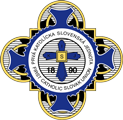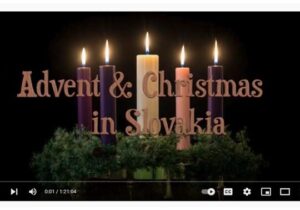This September’s 2017 Slovakia Heritage Tour was a family affair in more ways than one with mothers, fathers, daughters, cousins and sisters coming together to find their family roots and return to the Slovak way of life they learned from their parents and grandparents. By the end of the tour, after hearing each other’s stories and becoming reacquainted with many Slovak traditions, we said good bye feeling like we had traveled with our Slovak-American cousins.
Throughout the tour, we sang; danced; listened to Slovak music and admired Slovak folk crafts and the new wine at the festivals; marveled over their beautiful, livable old cities; explored castles and medieval churches; crossed dramatic and beautiful landscapes; and visited with Slovaks in small villages and larger towns.
As we learned about Slovak history and immigration to the United States, we learned first-hand from our travel group how many families went back and forth between the US and Slovakia in the early 20th century. Two of the families had fathers who were born in the United States and taken back to Slovakia as children only to be trapped in Slovakia because of World War I. These men made the fateful decision to return to the United States after the war, marry and raise their families as Slovak-Americans.
Three sisters, Marian Bruce, Irene Morse and Lorraine Trapp, fulfilled a long-held dream to return to the villages where their parents spent their childhood. Both parents were born in the US and taken back to Slovakia. They knew that their mother went to elementary school in Drienov (near Košice). They walked the streets of the town and found family names in the graveyard.
A search for their father’s Drejovic family roots was more complicated with a couple of false leads. His parents, their grandparents, had returned to Slovakia with their three young sons just before World War I. After the war the three older boys returned to the states leaving their parents and three younger siblings in Slovakia. With the help of a researcher, the sisters found their father’s town, Údavske near Humenné. They visited the town registry and were able to find the graves of one of their uncles and his family.
Traveling together in their native land, the three told stories about growing up as Slovak-Americans. Marian, the oldest, remembered summer visits with her grandmother who lived on an Indiana farm preserving many of the traditions from the Old Country. On the tour, her Slovak language picked up in childhood, and assumed to be forgotten, began to flow. Marian amused Slovaks with a saying her grandmother taught her, “Ty hlúpa husia!” (you are a stupid goose.)
Margery Amato and her daughter Laura were the most successful in connecting with family and friends, visiting people in Poprad, Prešov, Bratislava and their family’s small village of Údol where all of Margery’s grandparents were born and her father Stefan Knapp grew up. Stefan’s mother and father returned with their two young sons to make a life in Údol but World War I began. Stefan’s father fled back to the US to avoid serving in the Hungarian army, leaving his
wife and children behind in Údol. The family wasn’t able to return to the US until 1921 when Stefan was 14 years old.
Margery and Laura walked Údol’s small country streets and went off into the fields that their ancestors once worked. They were surprised by family resemblances and a feeling of closeness even though the family had lost contact decades ago. They plan to keep in touch by Facebook and email, and hope some of the younger relatives will visit the US someday.
“I was overwhelmed with how beautiful Slovakia is with its mountains and farm lands. I would love to go back and see more,” Margery said. She said that one of
the interesting things was learning about what it was like for her family living under a communist system for four decades. “Our family is so happy to be free.”
Whether it’s the haunting music of the fujara or a Šariš dance tune that brings us back to a wedding or festival from our Slovak-American childhood, it’s often a surprise traveling in Slovakia when we see a village garden scene, hear a voice, or taste a special food to have a rush of memories and emotions start flowing back.
The pull of Slovakia has been strong for Phyl Grich who first visited her Slovak family for a 2016 family wedding. She returned on this year’s tour to get an expanded overview of Slovakia and a better understanding of the Slovak traditions she knew as a child. She visited with her father’s cousin and her family in Sabinov.
“Knowing my grandmother as a child and meeting some of her family who visited the States, I feel a strong connection that I can’t explain. When I’m with them I feel like I’m back with her and my father,” Phyl said. “I enjoy seeing the old customs that they’re still doing today. After all these years since my grandmother left Slovakia, this is my family and it’s wonderful to get to know them again.”
The 2018 Slovakia Heritage Tour will be from September 7 –16, 2018. For more information, on this tour or planning a private family tour, check out our web site www.slovakiaheritage.com or contact Judy Northup-Bennett, 978-544-5144, slovakiaheritagetours@gmail.com



